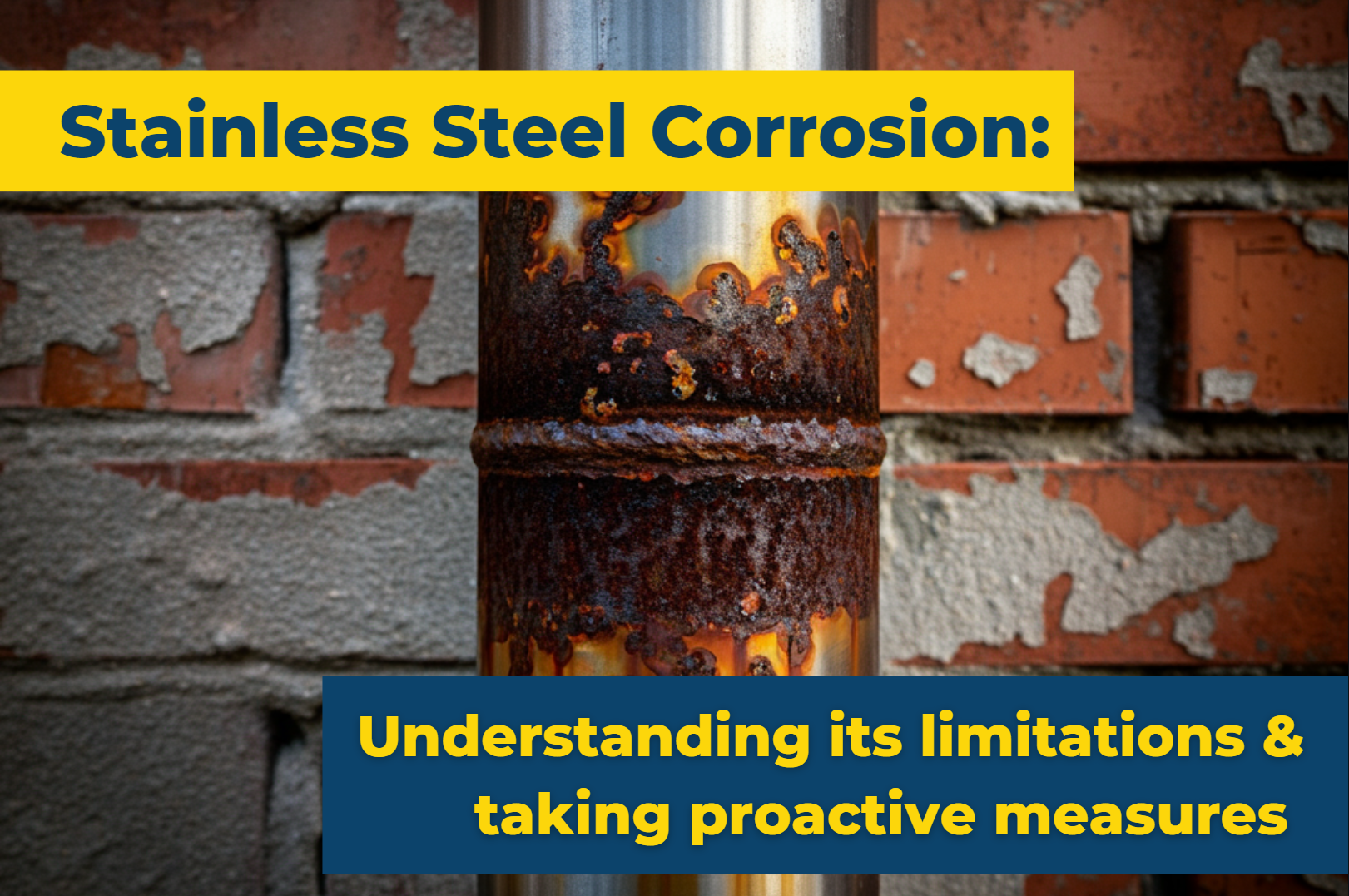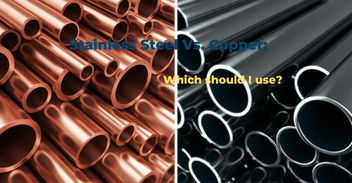Stainless Steel Corrosion: Understanding its limitations & taking proactive measures
Stainless steel, despite its name, is not entirely immune to corrosion. While it offers superior resistance compared to regular steel, certain conditions can still lead to its deterioration. Let's explore why and how stainless steel corrodes.
The Nature of Stainless Steel
Stainless steel is an iron-based alloy containing at least 10.5% chromium. This chromium content is crucial as it forms a thin, protective layer of chromium oxide on the surface when exposed to oxygen. This layer, known as the passivation layer, acts as a barrier against corrosion.
Factors Contributing to Stainless Steel Corrosion
Despite its protective layer, stainless steel can corrode under specific circumstances:
-
Chloride Exposure
One of the primary culprits in stainless steel corrosion is chloride exposure. Strong chlorides, such as those found in seawater or salt-rich environments, can cause pitting corrosion. This type of corrosion creates small holes or pits in the steel's surface, compromising its integrity.
Corrosion has also been seen to occur on insulated pipelines where the insulation contains chlorides. This has particularly occurred in hot water applications above 50°C and highlights the importance of using chloride free insulation when insulating stainless steel.
-
Bimetallic/Galvanic Corrosion
When two dissimilar metals are in contact in the presence of an electrolyte (like water), galvanic corrosion can occur. This process causes the less noble metal to corrode more quickly. In stainless steel applications, this can happen when different grades of stainless steel are welded together or when stainless steel is in contact with other metals.
Some ways to overcome this can include using a non-ferrous spacer to separate the two metals, a rubber gasket, or in the case of installing bolts and nuts, using a nylon bolt washer or applying a moly-bond coating to the bolts.
-
Contamination from Other Metals
Particles of plain steel or iron can disrupt the protective oxide layer of stainless steel. This often occurs when equipment used for processing different metals is not properly cleaned between uses. The transferred particles can initiate corrosion on the stainless-steel surface. This is often very localised corrosion and results in small pin-hole leaks.
-
Extreme Temperatures
Due to its chromium and nickel content, grade 330 stainless steel can withstand temperatures up to 1,000 degrees Celsius. While stainless steel has a high melting point, extreme temperatures can affect its corrosion resistance. High temperatures (Above 700 degrees Celsius) can cause scaling, where flaky material forms on the surface, potentially leading to bimetallic corrosion. Additionally, temperature extremes can temporarily disrupt the protective oxide layer, increasing corrosion risk.
-
Environmental Factors
Unaccounted environmental factors can lead to unexpected corrosion. For instance, a coastal factory location might expose stainless steel to salt and moisture in the air, factors that might not have been considered in the initial design specifications. As concentrations of salt build up on the stainless-steel surface, over time this can trigger corrosion.
-
Acid Exposure
While stainless steel generally resists acidic corrosion, its performance varies depending on the specific grade of steel, acid concentration, and environmental temperature. Hydrochloric acid is highly corrosive to most stainless steels.
-
Strong Bases
Although stainless steel resists weak bases well, stronger bases can cause cracking or etching corrosion. Special care must be taken with chloride solutions like sodium hypochlorite.
Types of Corrosion in Stainless Steel
Stainless steel can experience several types of corrosion:
-
Pitting Corrosion
This localised form of corrosion creates small holes or pits in the steel's surface. It's often caused by chloride exposure or poor aeration. Steels with higher molybdenum content tend to resist pitting better.
-
Crevice Corrosion
This occurs in narrow gaps or crevices where oxygen is limited, allowing chlorides to concentrate. It can happen between two metals or between metal and non-metal surfaces.
-
Intergranular Corrosion (or Weld Decay)
When stainless steel is heated to temperatures between 550°C and 850°C, chromium can precipitate out, reducing the steel's ability to form its protective layer. This often occurs during welding processes. See our blog on this HERE
-
Stress Corrosion Cracking
Stress Corrosion Cracking (SCC) in stainless steel occurs when tensile stress and a corrosive environment, such as chlorides, combine to create cracks. This phenomenon begins with microscopic surface cracks that propagate due to stress concentrations and the breakdown of the protective passive film. Factors like manufacturing residual stresses and elevated temperatures can exacerbate SCC. To mitigate this issue, engineers can employ strategies such as material selection, stress relief treatments, and environmental controls to enhance the durability of stainless-steel structures.
Preventing Stainless Steel Corrosion
While stainless steel can corrode, several measures can be taken to minimise this risk:
- Choose the right grade of stainless steel for the specific application and environment.
- Use proper welding techniques and materials to prevent galvanic corrosion.
- Thoroughly clean equipment between processing different metals to prevent contamination.
- Consider environmental factors when selecting stainless steel for a particular use.
- Apply protective coatings in highly corrosive environments.
- Ensure proper drainage and use appropriate gaskets to prevent crevice corrosion.
- Use low-carbon steels or add stabilising elements like titanium or niobium when welding to reduce weld decay
- Implement post-weld heat treatments to minimise corrosion risks.
Conclusion
Stainless steel's corrosion resistance comes from its chromium content, which forms a protective oxide layer. However, this layer can be compromised under certain conditions, leading to various forms of corrosion. Understanding these mechanisms is crucial for proper material selection and maintenance in different applications.
While stainless steel offers excellent corrosion resistance compared to many other materials, it's not infallible. By considering the specific environment, potential contaminants, and processing methods, engineers and manufacturers can select the most appropriate grade of stainless steel and implement necessary precautions to maximize its longevity and performance.
Ultimately, the key to preventing stainless steel corrosion lies in understanding its limitations and taking proactive measures to protect its inherent corrosion-resistant properties. With proper selection, processing, and maintenance, stainless steel can provide long-lasting, corrosion-resistant performance in a wide range of applications.
If you want to know more about our Stainless Steel products and which would be perfect for your next project, why not get in touch with us at Waterworks.



.png?width=352&name=WW%20%20Blog%20headers%202023%20(3).png)

